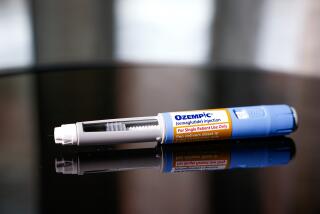Op-Ed: Want to reduce opioid use? Nudge the doctors who prescribe them
- Share via
An Orange County doctor was arrested by federal authorities in December on suspicion of illegally prescribing narcotics, “flooding Southern California with huge quantities of opioids,” according to the U.S. Attorney’s Office. Dr. Dzung Ahn Pham is accused of distributing drugs to five people who died of overdoses and a sixth who has been charged in a DUI crash that killed a Costa Mesa fire captain. In addition, the gunman who killed 12 people in Thousand Oaks in November had pills that Pham had prescribed for someone else.
Although the allegations against Pham paint a stark picture of extreme negligence and violation of the Hippocratic Oath to do no harm, most of us doctors have the best of intentions when prescribing medications, including narcotics. However, even when our motivations are pure, the reality is that we still vastly overprescribe opioids. In Los Angeles County, doctors in 2017 wrote 4,266,149 opioid prescriptions. That includes me.
For the record:
1:00 p.m. Jan. 2, 2019This Op-Ed article wrongly identifies the affiliation of the researchers who found that doctors prescribe fewer opioids if they are notified of patient deaths from overdose. They are associated with the University of Southern California, not the University of San Diego.
So how can that number be reduced?
Nudge us.
In August, researchers at the University of San Diego published the results of a groundbreaking experiment that showed the value of a little nudge. Their subjects were 861 doctors who had prescribed narcotics such as oxycodone. All of these doctors had patients who had died of such drugs. The researchers arranged for half of the doctors to receive letters notifying them of the deaths; the other half did not receive a letter.
After three months, the doctors who received the letter prescribed 4.5% fewer high-dose opioids and were 7% less likely to start a patient on any opioid. The reality is that most of us doctors never know what good or bad ultimately comes from many our prescriptions. The “Dear Dr.” letter gave the physicians direct feedback in a nonjudgmental and informative way and nudged them to correct course. Who thought a simple letter could have such a life-saving impact?
Research has shown that most people addicted to opioids today began taking them because of a prescription.
This simple idea deserves to be spread. While the vast majority of media and policymaking attention has focused on solving downstream consequences, such as increasing access to the overdose-reversal agent Narcan, far less attention has been paid to changing doctors’ prescribing patterns. Pham’s story appears to be a tragic case in point.
Of the 49,000 Americans who died from opioid overdoses in 2017, the U.S. Centers for Disease Control and Prevention estimates that nearly half died from prescription drugs rather than illicit opioids like heroin or synthetic fentanyl. Research has shown that most people addicted to opioids today began taking them because of a prescription.
Now behavioral economics is cracking the case.
In 2018, Yale researchers inserted a simple trick into the software that doctors in the Yale New Haven Health System use to place prescription orders: They changed the default number of opioid pills from 30 to 12. Doctors could still order 30, but it meant thinking about the number enough to change it from the default. The average number of opioid pills prescribed plummeted by 33% across the entire system.
Using social norms to influence doctor behavior is another “trick” with tremendous potential.
In a recent study conducted on the overprescribing of antibiotics for viral infections, monthly reports sent to doctors comparing their prescribing practices with those of top peer performers resulted in a 71% decline in inappropriate antibiotic prescriptions. Harnessing the ultra-competitive instincts of doctors, this effect lasted a year after the reports stopped.
Now University of Pennsylvania researchers are undertaking a large-scale three-year trial to see if the same nudge works on opioid prescribing practices.
Nudges are a low-cost, high-impact way to change behavior. L.A. County is a believer in this idea. In October, the Board of Supervisors took the progressive step of tapping into behavioral economics. They voted to create the Prescriber Notification Process: a letter mailed to doctors every time a patient who had received a narcotic prescription from that doctor dies from an overdose.
The notification process starts in early 2019, a helpful policy to alter the behavior of doctors. When we positively change doctors’ behaviors, we might just save lives. Even if it’s with a simple letter.
Nakhasi is a primary care physician at Department of Health Services-managed MLK Outpatient Center whose patients include opioid addiction survivors.
Follow the Opinion section on Twitter @latimesopinionand Facebook
More to Read
A cure for the common opinion
Get thought-provoking perspectives with our weekly newsletter.
You may occasionally receive promotional content from the Los Angeles Times.










